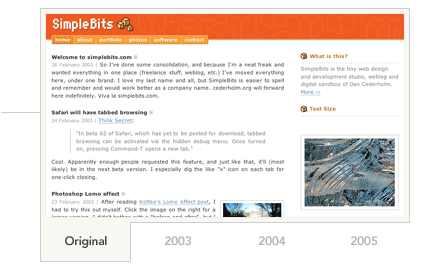ROMA – Un battito di ciglia e l’internauta ha già valutato la pagina web. Gli utenti di internet decidono in fretta quali siti scartare, questo si sapeva, ma mai si sarebbe immaginato che per valutare una pagina bastano due decimi di secondo. Lo studio di alcuni ricercatori canadesi, apparso oggi sul sito di Nature, prova che gli utenti internet fanno le loro scelte in molto meno tempo di quanto fino a oggi si pensasse necessario: “I miei colleghi ritenevano impossibile si potesse davvero vedere qualcosa in meno di mezzo secondo – afferma Gitte Lindgaard, una delle autrici della ricerca – ma gli esperimenti hanno provato che le valutazioni si fanno nei primi due decimi di secondo di osservazione”.
I ricercatori hanno mostrato a dei volontari, nel minor tempo possibile, delle pagine web che erano state precedentemente valutate da altri come chiare e immediate oppure confuse. Ai loro è stato chiesto di valutare se le pagine fossero accattivanti e di fare una graduatoria, su questa base, delle migliori. Anche se le immagini si susseguivano in soli due decimi di secondo, i loro giudizi combaciavano con quelli fatti da chi aveva osservato le pagine per tempi molto più lunghi.
Che la prima impressione fosse quella determinante, nell’esprimere delle valutazioni, era cosa nota agli psicologi, meno che si formasse con questa velocità.
Gitte Lindgard spiega che la rapidità con cui i lettori valutano una pagina web è frutto dei “pregiudizi cognitivi”. Alla gente piace aver ragione, secondo la ricercatrice canadese, perciò continuare a usare un sito web che si è giudicato bene alla prima impressione aiuta a provare a se stessi che si è presa una decisione iniziale corretta.
Non è un fenomeno ristretto a internet, ma che pervade la nostra società, come dimostrano studi fatti in altri campi. “E’ terribile, se ci riflettiamo, ma la tendenza ad anticipare le conclusioni è molto più frequente di quanto si pensi”, osserva Lindgard.
Sui “congnitive bias”, i pregiudizi cognitivi, i web designer lavorano da tempo, sfruttando anche quello che gli psicologi chiamano “effetto alone”. Se si riesce a prendere al laccio il lettore con un buon design si fanno passare in secondo piano le pecche del sito e l’utente è portato a valutare in maniera più accomodante la pagina nell’insieme. La scoperta degli scienziati canadesi non fa che confermare la velocità di internet, per quanto riguarda invece le scelte dei web designer è Marc Coudron, dell’agenzia londinese Pod1 a dare le ultime tendenze. “La differenza tra una pagina che funziona e una scadente è spesso la velocità di caricamento – dice Coudron – altrimenti l’utente potrebbe stancarsi prima ancora di aver avuto al prima impressione”.
L’uovo di Colombo: prima di tutto vedere. Sul vedere cosa, Caudron parla di una nuova tendenza degli utenti: “l’approccio puritano”. La gente vuole informazioni nella maniera più veloce e più semplice possibile, perciò fondamentale è rifuggire la tentazione di mettere su una pagina web più roba possibile. E’ la vecchia questione delle scelte, storia molto più vecchia del web.
 Thus, the differences between Redesigners and Realigners might be summarized as follows: The desire to redesign is aesthetic-driven, while the desire to realign is purpose-driven. One approach seeks merely to refresh, the other aims to fully reposition and may or may not include a full refresh.
Thus, the differences between Redesigners and Realigners might be summarized as follows: The desire to redesign is aesthetic-driven, while the desire to realign is purpose-driven. One approach seeks merely to refresh, the other aims to fully reposition and may or may not include a full refresh.